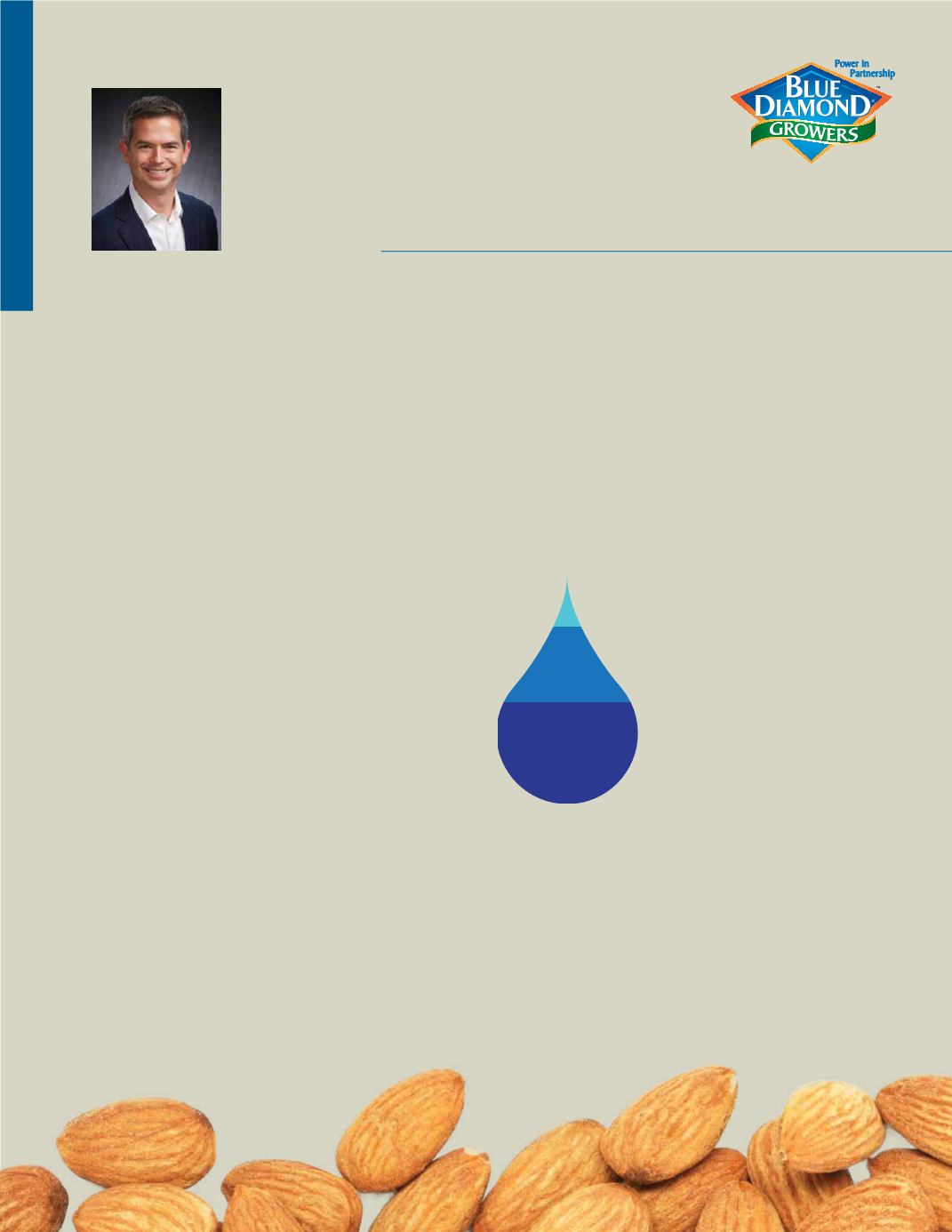
PRESIDENT’S CORNER
President’s Corner
Mark Jansen
President and CEO
“Facts are Stubborn Things”
– John Adams
The headlines have been unavoidable. Almonds have been painted as our state’s “thirstiest” crop but what these stories lack
is context. Your
Blue Diamond
management team has been collaborating with industry experts to communicate the facts about
agricultural water use to the media and our urban neighbors.
According to a recent editorial in San Jose Mercury News, “California's dams and reservoirs were never envisioned to release
water year-round for environmental objectives such as aiding the delta smelt or reintroducing salmon in the San Joaquin River
watershed. A majority of reservoir water once intended for households or farming is simply sent out to sea.”
The drought debate continues as we enter the hot, dry summer of the Central Valley, with mandatory water restrictions now in
place throughout our state. For many Californians that means the drought will now affect their day-to-day lives. Millions of urban
Californians will have to join agriculture in the fight to save water and push for storage to protect our future. Governor Brown’s
mandate made it clear that all Californians need to do their part to conserve our most precious resource, and yet the media
firestorm aimed at agriculture, and almonds specifically, has been fierce.
Our message has been simple:
all food takes water to grow.
California’s agricultural abilities are second to none. In fact, according
to the California Department of Food and Agriculture (CDFA), nearly
half of our country’s fresh fruits, nuts and vegetables come from
California. And CDFA reports that from 1967 to 2010, California
agriculture has increased revenue and decreased total applied
water use by 20 percent! In order to achieve such an impressive
statistic, access to a consistent water supply is key. The amount
of water required for California farming to grow our food is
only 40 percent of captured water with environmental projects
taking the majority at 50 percent. The often-quoted 80 percent
ignores any water used for environmental purposes.
I have read suggestions that agriculture has been let off the hook by the governor’s mandate. Here are the facts: in 2014 farmers
received only 5 percent of their contracted State Water Project allocation and 0 percent from the Federal Central Valley Project.
This year, farmers are projected to receive 20 percent of State Water Project allocation and again, 0 percent of Federal Central
Valley Project water. Our farmers have been feeling the effects of this drought from the very beginning.
Some have questioned whether agriculture’s economic impact justifies the amount of water used by the industry. The media
points to agriculture’s 2.8 percent GDP, but again, this figure lacks context. It does not tell the whole story. Getting our food from
farm to fork involves an interconnected supply chain, undoubtedly contributing significantly more than 2.8 percent to the state’s
economy. The almond industry alone contributes 104,000 jobs to California, 97,000 of which reside in the Central Valley, and
over 37,000 additional jobs throughout the supply chain.
10% URBAN
40% AGRICULTURAL
50% ENVIRONMENTAL


